The post 3 Tips To Haggling Prices In Vietnam appeared first on The Expeditioner Travel Site.
]]>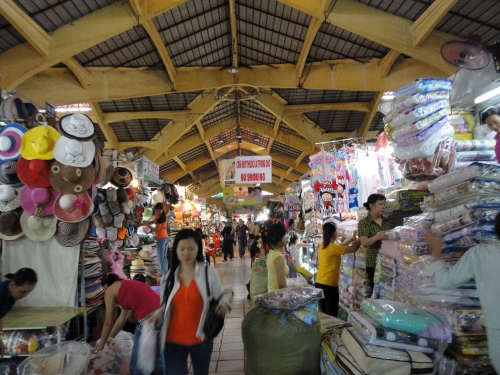
One of the biggest adjustments I had to make when I moved to Ho Chi Minh City, Vietnam, after college was the idea that it is perfectly acceptable, expected even, to argue with a merchant about the price of their goods or services. It’s just a part of life. A part that makes a lot of Westerners kind of uncomfortable.
After all, most bargaining is done over the equivalent of a pocketful of change. Whenever I translated my haggling into U.S. dollars, the whole process seemed almost obscene.
“How much to Tan Dinh Market?” I asked a xe om (motorbike taxi) driver. I had been living in Vietnam for a few months, and was half decent at using Vietnamese for asking “how much” and then shooting down numbers.
“94 cents,” he told me.
I immediately rolled my eyes and groaned. “Too expensive! 63 cents,” I countered.
The driver scoffed: “ 63 cents? No way. Too cheap. 75 cents.”
I gave in, but I was sure to look unhappy about it. I wanted him to know that I would take it, even though I knew better. “75 cents. Okay.”
20 cents: the kind of change that would be too little to tip a bartender back home.
But bargaining is commonplace around the world, especially in developing countries. And you should do it, no matter how silly/greedy/ashamed you feel about arguing over a few cents.
Here’s a primer on the art of haggling:
1) Why You Should Bargain
Economics
There are a few good arguments for engaging in epic arguments over prices, though the most pragmatic one might be a simple case study in economics.
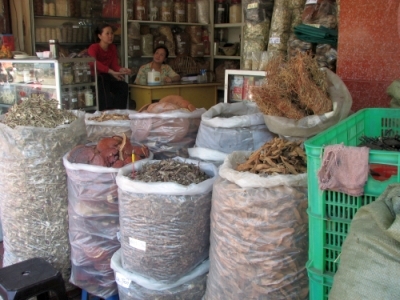 Imagine you have a shop in a Vietnamese market selling eggs. You can sell a dozen eggs to a local (who knows what the price should be and won’t buy if it’s excessively costly) for 15,000 dong (94 cents). But a tourist, who doesn’t know any better, is willing to pay 30,000 dong ($1.88).
Imagine you have a shop in a Vietnamese market selling eggs. You can sell a dozen eggs to a local (who knows what the price should be and won’t buy if it’s excessively costly) for 15,000 dong (94 cents). But a tourist, who doesn’t know any better, is willing to pay 30,000 dong ($1.88).
Now, you have a fixed supply: your chickens can only lay so many eggs. To maximize profits, it’s in your best interest to sell exclusively to foreigners at the higher price.
So the prices rise. Locals either can’t or won’t pay the asking price, but there are foreigners to buy the eggs. Your profits increase, but the local consumers don’t have any eggs.
In a nutshell: not haggling artificially inflates prices and is bad for the local economy.
Pride
In Vietnam, there is no social taboo against asking directly how much something cost. This is cultural standard, and if you pay too much someone will tell you.
Every time I came to work with a new bag/haircut/motorbike, someone asked me how much it cost. And every time it led to a full day of people approaching me to confirm the gossip, and then letting me know I had definitely paid too much.
Language practice
I promise you that there is no better way to learn to count in another language than through haggling with vendors. It also inspires you to memorize useful new phrases such as “too expensive” or “no, this is not real Gucci.”
2) When And Where To Bargain
Not every price is negotiable. Many legitimate taxi companies will only charge metered fares, and it would be in poor taste to try and talk your waiter into giving you a better price at a restaurant. So when and where do you start haggling?
A good rule of thumb is that if something has a price tag on it, the cost is non-negotiable. This includes restaurants, where prices are usually listed on menus or signs. Brick and mortar stores (as opposed to market stall) also typically have fixed prices.
In Ho Chi Minh City, there are some great markets where you can practice your haggling. Here are a few of my favorites:
Best for anything
Binh Tay Market (Thap Moi Street) is the wholesale destination for everything from dried shrimp to toothpaste to soccer jerseys.
Best for souvenirs.
Ben Thanh (Le Loi Street) is located smack in the middle of downtown and caters to the tourists that wander through.
Best for clothes
Saigon Square (near the intersection of Hai Ba Trung Street and Le Duan Street) has all the brand names you remember from home, with none of the quality. Still, if you want a Chanel handbag, this is your best bet.
Best for military surplus goods
Dan Sinh Market (Yersin Street) is chock full of combat boots, Zippo lighters and canteens supposedly left over from the wars of the last century.
3) How To Bargain Effectively
Use the local language
The first trick to haggling in Vietnam is to do it in Vietnamese. The price drops tremendously if the vendor thinks you live there. It indicates that you know what kind of prices you should be paying.
Know the market price
If you are looking for something specific, ask a local what the going rate is before you head to the market. It helps to go into the negotiations with an idea of what you’re supposed to pay.
Start haggling by quoting a price that is about 10-20% lower than what you think you should be paying. Work your way up from there.
Walk away
Feigning disinterest in the product and the price to the point where you simply leave it on the table can cause a merchant to reconsider their pucker point.
This trick can backfire, however, if you walk away from something you want to buy more than the vendor wanted to sell it to you. You may have to return with your tail between your legs and pay the last price offered.
Go off script
There are no set-in-stone to follow when you haggle. Every situation is a little bit different and it’s important that you adapt. Some vendors will try to get every cent they can, while others will give you a great price right off the bat; try to play to your audience.
Practice
Every time you haggle for something, you get a little better at it. Whether it’s learning to read the body language of a salesperson, improving your indignant cry of “too expensive!” or getting a better understanding of the going rates for pineapples, practice makes perfect.
Don’t want it.
The last trick, and most successful strategy, is to not actually want what you are being sold. The less you want it, the better you are at bargaining.
By far, my most successful attempt at bargaining was for something I didn’t want.
It was a Sunday night market, and I was looking at some watches at a stall full of glittering sunglasses a faux Rolexes. I wasn’t so much looking to buy a watch as I was testing a theory that watches invariably look weird on my wrists. After trying a few on, I decided I was overly neurotic about the whole thing and started to leave.
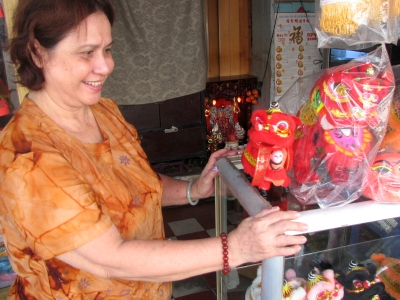 As I moved towards the street, the shopkeeper, a robust woman in matching Mickey Mouse pajamas, came over. She asked me if I like the watch, and I said yes but I didn’t want it.
As I moved towards the street, the shopkeeper, a robust woman in matching Mickey Mouse pajamas, came over. She asked me if I like the watch, and I said yes but I didn’t want it.
Not one to take no for an answer, she held it up to my face and asked how much I would pay for it. It seemed like I wouldn’t be getting out of there without going through all the motions, so I asked her the cost.
180,000 dong ($11.25) for the fake Rolex. It was too expensive, I told her as politely as I could. I turned to walk away. Problem solved.
She grabbed my arm and asked again how much I would pay. Just to expedite my getting out of there, I gave a price that was so low she would have no choice but to kick me out.
“70,000 dong,” I told her. About $4.37USD.
She slapped her hand to her forehead. “No! I cannot! Too cheap. 150,000?”
I shrugged. “Nope, 70,000. I guess I’ll be on my way . . .”
“Okay, Okay. I give you 110,000 because we are friends.”
But not the kind of friends that drive you to the airport. “No. 70.”
“100? No, I mean 90? 90,000?”
“No.”
“80? 85? 70 Okay. Yes, 70,000 Okay.”
She bargained herself. I pretty much had to buy it at that point.
Besides, it served the purpose of heartily impressing my Vietnamese co-workers. Bargaining past half the original price was unheard of, even among locals.
Too bad it broke within 24 hours of purchase. And too bad there are no warranties in Vietnamese markets.
By Whitney Cox

About the Author
 Whitney Cox is now living in Wellington, New Zealand, where she is slowly completing a post-graduate degree. She writes about traveling and living in New Zealand at FurtherThanYouThink.com.
Whitney Cox is now living in Wellington, New Zealand, where she is slowly completing a post-graduate degree. She writes about traveling and living in New Zealand at FurtherThanYouThink.com.
The post 3 Tips To Haggling Prices In Vietnam appeared first on The Expeditioner Travel Site.
]]>The post 8 Coffee Shops In Saigon You Need To Try appeared first on The Expeditioner Travel Site.
]]>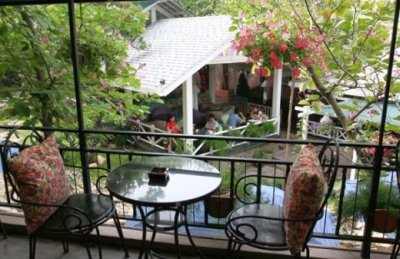
Travelers who’ve downed a cup of joe in Southeast Asia know that the stuff’s good — really good — but not like what you’re used to at home. Given the coffee’s brewed from extra-bold beans and served in a climate where the last thing you crave while you’re sweating through your shirt is a hot drink, the average cup there is served over ice and mixed with a healthy dose of condensed milk to make it a little more palpable. And for those looking for a little respite in the craziness that is Saigon, the LA Times put together this list of the top 8 coffeehouses in Saigon.
In putting together their list, they put a special emphasis on relaxation, naming such spots as Mien Dong Thao (pictured above) that features waterfalls and tropical plants in their backyard, and Niet Ban, a Buddhist-influenced cafe with soothing music and a koi pond. Oh, and don’t expect a to-go cup. I tried, and I after a little bit of “lost in translation,” I ended up in the street with a ceramic mug that I had just bought and a coffee vendor considering going into kitchenware sales.
By Matt Stabile

ABOUT THE AUTHOR
 Matt Stabile is the Founder and Editor-in-Chief of The Expeditioner. The Expeditioner began in 2008 and is headquartered in New York City. You can read his writings, watch his travel videos or contact him at any time at TheExpeditioner.com. (@TheExpeditioner)
Matt Stabile is the Founder and Editor-in-Chief of The Expeditioner. The Expeditioner began in 2008 and is headquartered in New York City. You can read his writings, watch his travel videos or contact him at any time at TheExpeditioner.com. (@TheExpeditioner)
The post 8 Coffee Shops In Saigon You Need To Try appeared first on The Expeditioner Travel Site.
]]>The post December’s “Christmas Around The World” Photo Contest Winner: A Ho Chi Minh City Santa Hat appeared first on The Expeditioner Travel Site.
]]>
It never ceases to amaze us when two people are on the same page, let alone 8 million. We learned from our December photo contest at our Flickr group, that this is exactly the case every December in Vietnam’s Ho Chi Minh City. Our Christmas-themed contest winner comes from AMASC and is titled “Balloon Gazing.” She is the one that schooled us on the city’s Christmas custom:
During December, Ho Chi Minh City or Saigon (call it what you will), is home to the largest collection of people wearing Santa hats in the world. Everyone does it, taxi drivers, waiters, random adults, school kids but especially children. From the beginning of December the Christmas decorations go up and the main occupation of this city of 8 million is to dress your child like Santa and grab a few hundred images of them in front of the decorations, the hawkers and the other little Santas.
We really gravitated to this photo because, to us, it really grabs the essence of traveling during the holidays. Matt agrees: “I think nothing is cooler when traveling than seeing those incongruous images, like Christmas decorations in a hot climate in Southeast Asia.”
For more images from SE Asia, holiday oriented or not, head over to her photostream or blog full of spectacular shots. It may just plant a seed in your mind to spend next year’s holiday void of snow. I know I’m considering it. Chúc M?ng Giáng Sinh everyone — Merry Christmas.
With all this winter stuff going on, we thought we’d take a little break from it all and dream of those island getaways, bungalows, drinks served with umbrellas and inside some kind of fruit you’ve never seen before. January’s theme is “Island Vibes.”So relive those beachside massages all over again while you upload your island getaway shots to our contest thread.
The post December’s “Christmas Around The World” Photo Contest Winner: A Ho Chi Minh City Santa Hat appeared first on The Expeditioner Travel Site.
]]>The post Saigon From The Backseat appeared first on The Expeditioner Travel Site.
]]>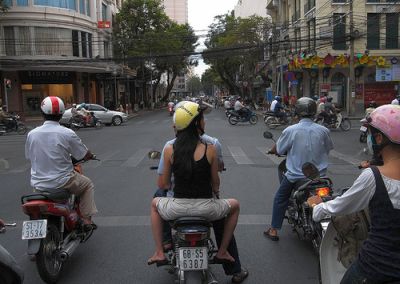
A tour of Saigon from the backseat of a motorcycle.
It’s dusk in Ho Chi Minh City — or Saigon as it is still called here — and the haze of the last ounce of light from the crimson setting sun is smothered in smog as I make my way through the busy streets. The thousands of motorcycles and scooters that clog the streets of Saigon every minute of the day begin turning on their headlights, lighting up the city in an iridescent glow of traffic.
I am on Pham Ngu Lao — essentially Saigon’s answer to Bangkok’s Khao San Road — in search of a place to sleep. It caters to the backpackers of Southern Vietnam, acting as a tourist information hub as well as a bus terminal. There are a wide variety of budget restaurants and trinket shops spread between dozens of ultra-discounted clothing retailers.  However, a quick turn down one of the alleys off of the street reveals a much different world. These one-and-a-half-meter-wide thoroughfares shift through small neighborhoods of clustered homes with open doors, loud televisions, and even louder residents. There is an anthill of movement, babies crying, and the occasional chicken making its way across the street. The stir of Mahjong chips and smiles sets a jovial atmosphere to the otherwise intangible background static of the labyrinthine cement corridors.
However, a quick turn down one of the alleys off of the street reveals a much different world. These one-and-a-half-meter-wide thoroughfares shift through small neighborhoods of clustered homes with open doors, loud televisions, and even louder residents. There is an anthill of movement, babies crying, and the occasional chicken making its way across the street. The stir of Mahjong chips and smiles sets a jovial atmosphere to the otherwise intangible background static of the labyrinthine cement corridors.
When the hotels along the city’s main strips of Bui Vien and Pham Ngu Lao Street fill up during the peak season, travelers often wander down these dovetailed back alleys to find a host of inviting open doors with hand-painted hotel signs. Many of them are nothing more than a family’s home where spare bedrooms are rented out for extra money when the impending tourist boom busts at the seams.
I enter one of the many hotels that cater to budget backpackers looking to stretch their money. I notice a baby’s playpen — a hodgepodge of kitchen utensils and Buddha luck charms — standing opposite a small desk next to the sliding metal front door. When I’m offered a pen to write down my passport information I’m startled by the touch of oblong fingers.
As the man walks behind the desk with his bowlegged hunch to grab another pen, he suddenly swings back around, revealing a right hand that is clearly connected to his bicep, lacking a forearm, elbow, or any resemblance of normally shaped fingers. He smiles back at me with his crossed eyes and I hand over the slip of numbers and letters. Agent Orange victims are reminiscent of a war that is gone but certainly not forgotten in Vietnam. Pictures of the graphic mutations resulting from this biological weapon are put on display in the Saigon War Museum and amongst some of the people.
As I settle in upstairs, I smell the odor of fish sauce leaking up the smooth wooden-railed staircase into my room. Directly across the street I can see a few watching, waiting women on the corner of Bui Vien and De Tham Street. Behind them is Go2 Bar, a well-designed rock bar with a great array of local and international cuisine. The patios are often filled during the afternoon with travelers and locals alike drinking the day away.
When the incessant smell of motor oil overtakes the night, it is hard not to feel the debauchery and decadence most commonly associated with Saigon’s nightlife. The infamous Apocalypse Now Club dutifully lives up to its name, however there are no cameos by Marlon Brando in this version. The club is one of Saigon’s oldest, and it hosts a variety of popular music for the revolving door of travelers that spin through the city. The blurring faces on the dance floor create an amicable ambiance, inviting to every transient looking for good music and a rowdy crowd. Be forewarned that Saigon is a hot bed of women practicing the oldest profession in the world. Foreigners are seen by many as walking ATMs, and presentation is not always made clear in the midst of the chaos of a club.
Despite the range of poverty in South Vietnam, the people are still generally happy and willing to guide travelers with friendly advice. There are many personal tour guides that can be hired, including motorcycle drivers. Though slightly more expensive than the average guide, these motorized trips can offer a view of the “real Vietnam.” A walk in one of the beautiful colonial French parks surrounding Pham Ngu Lao can lead you to one of these guides if your timing is right.
“Welcome to Saigon!” a small man says, greeting me as he emerges from the shadow of a tree. “You can see Saigon better on the back of a bike,” he chuckles, offering me a personalized tour. With a portfolio of pictures and signatures from travelers around the world, he introduces himself as a Saigon travel guide. For a fair price he offers tours of Saigon and the nearby attractions.
As we ride down the road he translate the bright red and yellow billboards on the side of the road. “Work harder for the people,” one such sign reads. On the roads outside of Saigon, villagers toil away in passing fields donning sedge hats — the iconic conical straw hats that shield them from the midday heat. Many motorcyclists also wear them in place of a conventional helmet, despite their obvious lack of utility.
 We make our way to the C? Chi Tunnels, located about 45 minutes outside of Saigon, where travelers can explore the hollowed out subterranean corridors used by Vietnamese soldiers during the war. Visitors are welcome to crawl down these pitch black hideouts if they have the stomach and lack the girth. Whole kitchens, infirmaries, and infantry quarters have been made viewable from the surface for those unwilling to meander through the humid maze. My guide informs me that these particular tunnels are about twice as big as most of the original ones utilized during the war. There is also a firing range for those so inclined to let off a few rounds of archived arsenal.
We make our way to the C? Chi Tunnels, located about 45 minutes outside of Saigon, where travelers can explore the hollowed out subterranean corridors used by Vietnamese soldiers during the war. Visitors are welcome to crawl down these pitch black hideouts if they have the stomach and lack the girth. Whole kitchens, infirmaries, and infantry quarters have been made viewable from the surface for those unwilling to meander through the humid maze. My guide informs me that these particular tunnels are about twice as big as most of the original ones utilized during the war. There is also a firing range for those so inclined to let off a few rounds of archived arsenal.
Later, over a hot bowl of Vietnamese Pho noodles, my guide clinks his beer with our waitress who has sat down with us to chat. She kindly gets us some more drinks and vegetables when needed while providing conversation for our dinner to slowly wind down our busy day.
As the smoldering red sun sets yet again over Saigon, we buzz past the gates of Reunification Hall, the site where North Vietnamese tanks crashed through on April 30th 1975, marking the fall of city. The heart of Saigon is as unmistakable as the back alleys of Pham Ngu Lao. It reminds you that, like all parts of the city, it is jovial, gritty, and welcoming if you are up for the ride.

The post Saigon From The Backseat appeared first on The Expeditioner Travel Site.
]]>The post What Exactly Is Bánh Sèo Anyway? appeared first on The Expeditioner Travel Site.
]]>Bánh xèo means either “sizzling cake” or “sound crepe,” depending on what your Google search turns up, but either way, the name refers to this southern Vietnamese crepe made of rice flour, water, coconut milk, pork, shrimp, and bean sprouts that’s pan fried, then “rolled up in a leaf of lettuce and dipped in a flavorful lime-scented sauce before it gets popped in your mouth.”
The above vid, shot in the streets of Ho Chi Minh City, shows you the best way to make it. Volunteers who would like to experiment creating this dish are welcome to my house anytime.
The post What Exactly Is Bánh Sèo Anyway? appeared first on The Expeditioner Travel Site.
]]>